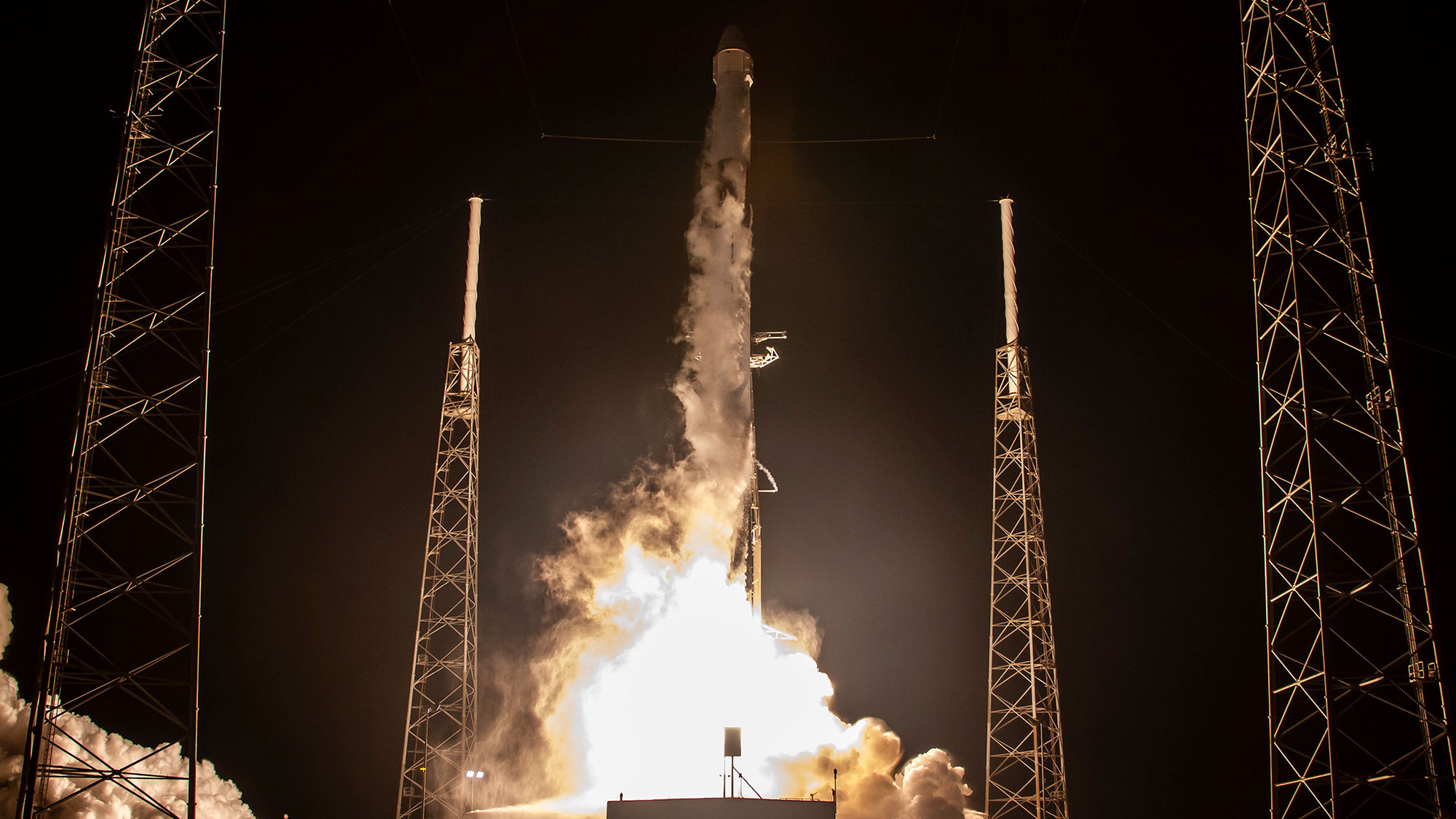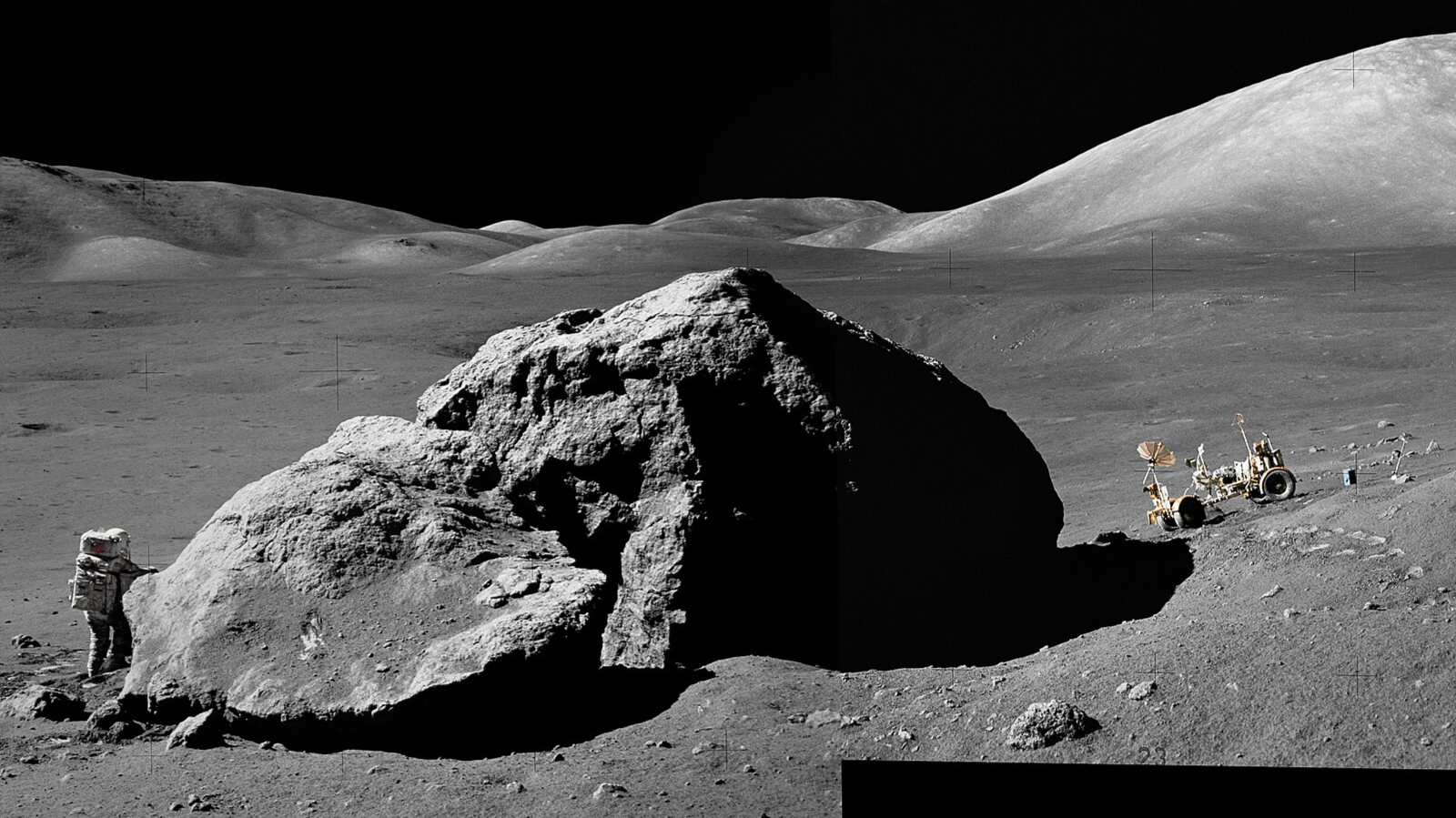SpaceX tests Falcon 9 rocket for next Starlink satellite fleet launch
Liftoff is set for Sunday at 10:35 a.m. EST (1535 GMT).

CAPE CANAVERAL, Fla. — SpaceX successfully fired up the Falcon 9 rocket booster that will launch the company's next batch of Starlink satellites today (Feb. 14) in a test that sets the stage for a weekend liftoff.
That Falcon 9 rocket is expected to send 60 Starlink internet satellites into space no earlier than Sunday (Feb. 16). Liftoff is set for Sunday at 10:25 a.m. EST (1525 GMT).
The company originally planned for a launch on Saturday (Feb. 15), but poor weather at the rocket's recovery zone prompted the 24-hour schedule slip.
The company conducted a so-called static-fire test on Friday (Feb. 14) at 9 a.m. EST (1400 GMT) of a Falcon 9 rocket at Space Launch Complex 40 at Cape Canaveral Air Force Station in Florida, the company said on Twitter. The upcoming launch will mark the third Starlink flight this year.
Video: See SpaceX's 1st Starlink satellites in the night sky
The veteran Falcon 9 rocket rolled out of its hangar on Thursday (Feb. 13) and went vertical on the launch pad in advance of the planned test-firing of its nine first stage engines on Friday morning.
The two-stage rocket featured in the upcoming launch includes a thrice-flown first-stage booster, having previously lofted two commercial Dragon resupply missions (CRS-17 in May 2019 and CRS-18 that July) as well as a hefty telecommunications satellite in December.
Breaking space news, the latest updates on rocket launches, skywatching events and more!
This marks the fourth time a SpaceX booster will fly four times.
But before it can launch, SpaceX put the vehicle through a routine launch rehearsal, called a static-fire test. This is a standard part of prelaunch procedures and one of the last major milestones before liftoff. During the test, teams loaded the Falcon's super-chilled propellants — kerosene and liquid oxygen — into the rocket and then briefly ignited the first stage’s nine Merlin 1D engines.
Related: SpaceX's 1st Starlink megaconstellation launch in photos!
The engines briefly fired at 12 p.m. EST (1700 GMT), generating more than 1 million pounds of thrust while the booster remained firmly on the ground.
"Static fire of Falcon 9 complete ahead of launching 60 satellites — due to poor weather in the recovery area tomorrow, now targeting launch on Sunday, February 16 at 10:25 a.m. EST, 15:25 UTC," SpaceX tweeted shortly after the test.
Static fire of Falcon 9 complete ahead of launching 60 Starlink satellites—due to poor weather in the recovery area tomorrow, now targeting launch on Sunday, February 16 at 10:25 a.m. EST, 15:25 UTCFebruary 14, 2020
This test was slightly different from typical hold down tests that SpaceX performs prior to each launch in recent years.
SpaceX test fired this Falcon 9 with a payload attached. Typically, the company rolls out just the rocket's first stage, fires it up, and rolls it back so they can attach the payload. SpaceX has followed that method since 2016, when a Falcon 9 rocket exploded on the launchpad, destroying its satellite payload, during preparations for a static fire test.
However, with the Starlink launches, the company has decided to fire up the rockets with the payload sitting on top. This isn't a new practice for this launch, but is something the company is doing with most of its Starlink launches. Since SpaceX owns the payload, it assumes the risk if there were an anomaly. Plus, it cuts down on processing time, allowing the company to test fire one day and launch the next.
This practice was something SpaceX did in the past, but stopped after the loss of the AMOS 6 satellite in 2016. That explosion was attributed to issues with the composite overwrapped pressure vessels (COPVs) in the rocket's upper stage. The COPVs are responsible for keeping the rocket pressurized during flight as its fuel is depleted
Since then, the company has redesigned the COPVs and began using them when they started flying the Block 5 version of Falcon 9 in May 2018. In a prelaunch news conference prior to that inaugural launch, SpaceX CEO and founder, Elon Musk, described the COPVs as “the most advanced pressure vessel developed by humanity.”
NASA required SpaceX to fly the newly redesigned pressure vessels at least seven times before the company could begin carrying astronauts to the space station — a task they completed last year. With one successful uncrewed test flight, and a demonstration of the Crew Dragon's launch escape system, the only hurdles SpaceX has left to complete before that coveted crewed mission are a few more parachute tests and paperwork.
According to SpaceX, the Crew Dragon vehicle has arrived at the launch site. If all goes as planned we could see SpaceX launch people to the International Space Station in the next few months.
- SpaceX's Starlink Constellation Could Swell by 30,000 More Satellites
- SpaceX's Starlink Broadband Service Will Begin in 2020: Report
- 'Whoa, It Worked': Elon Musk Tweets Via SpaceX's Starlink Satellites
Follow Amy Thompson on Twitter @astrogingersnap. Follow us on Twitter @Spacedotcom or Facebook.
OFFER: Save at least 56% with our latest magazine deal!
All About Space magazine takes you on an awe-inspiring journey through our solar system and beyond, from the amazing technology and spacecraft that enables humanity to venture into orbit, to the complexities of space science.
Join our Space Forums to keep talking space on the latest missions, night sky and more! And if you have a news tip, correction or comment, let us know at: community@space.com.

Amy Thompson is a Florida-based space and science journalist, who joined Space.com as a contributing writer in 2015. She's passionate about all things space and is a huge science and science-fiction geek. Star Wars is her favorite fandom, with that sassy little droid, R2D2 being her favorite. She studied science at the University of Florida, earning a degree in microbiology. Her work has also been published in Newsweek, VICE, Smithsonian, and many more. Now she chases rockets, writing about launches, commercial space, space station science, and everything in between.

